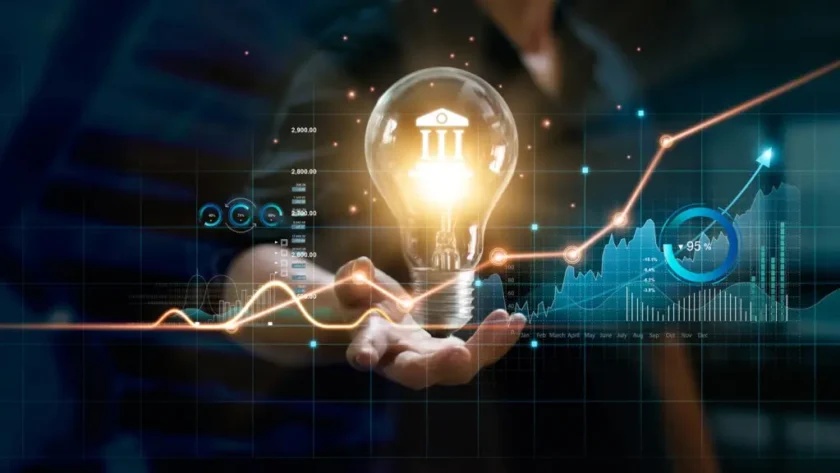The future of robotics is poised to bring about transformative changes across various industries and aspects of our daily lives. Robotics is an ever-evolving field, with advancements in artificial intelligence (AI), machine learning, sensors, and automation pushing the boundaries of what robots can do. These technological developments are reshaping industries, creating new opportunities, and solving complex challenges. But what does the future of robotics hold? Let’s explore the key trends and potential developments in robotics in the coming years.
1. Automation and Manufacturing
Robots have already revolutionized the manufacturing industry, and this trend is expected to continue to grow and evolve.
- Collaborative Robots (Cobots): One of the key future trends is the rise of collaborative robots, or “cobots,” which are designed to work alongside human workers. Unlike traditional industrial robots that are typically confined to specific tasks, cobots are safer and more adaptable, allowing for seamless cooperation in environments like assembly lines, warehouses, and production facilities.
- Advanced Automation: Robotics will further automate tasks across manufacturing processes, reducing the need for human intervention in repetitive, dangerous, or labor-intensive tasks. This will lead to enhanced production efficiency, faster turnaround times, and fewer errors, while freeing up humans for more complex or creative roles.
- 3D Printing and Robotics Integration: Robotics and 3D printing (or additive manufacturing) will converge to enable more complex and precise production methods. Robots could autonomously create objects using 3D printing technologies, reducing waste and providing more flexibility in manufacturing.
2. Healthcare Robotics
The healthcare industry is already benefiting from robotics, but in the future, these technologies will become even more integrated and sophisticated.
- Surgical Robots: Robotic-assisted surgery has made significant strides, but in the future, we can expect even more advanced surgical robots with greater precision and the ability to perform minimally invasive procedures. For instance, robots will assist surgeons in performing complex operations remotely, with real-time feedback from AI systems that can analyze a patient’s condition and suggest optimal treatment options.
- Medical Robots for Elderly Care: As the global population ages, robots will increasingly play a role in elderly care. Robots will assist in routine tasks, provide companionship, help with mobility, and monitor health conditions. These robots will be equipped with AI to provide personalized care, improve the quality of life for seniors, and reduce the burden on healthcare workers.
- Robotic Prosthetics and Exoskeletons: Advances in robotics will lead to improved prosthetics and exoskeletons that are more comfortable, functional, and responsive to the needs of users. These devices will allow individuals with mobility impairments to regain independence and perform everyday tasks with greater ease.
3. Autonomous Vehicles
Self-driving cars and autonomous vehicles are perhaps one of the most anticipated applications of robotics. The future of robotics in transportation will make travel safer, more efficient, and more accessible.
- Self-Driving Cars: Fully autonomous vehicles, powered by robotics and AI, are expected to transform the transportation landscape. They will reduce traffic accidents, minimize human errors, and make transportation more efficient by enabling vehicles to communicate with each other and adjust their routes in real time.
- Delivery Robots: Autonomous delivery robots are already being tested for last-mile delivery, and they will become more prevalent in urban areas. These robots, often small and agile, will deliver packages, groceries, and even food with minimal human intervention. This will enhance the convenience of online shopping and provide faster, more efficient delivery services.
- Autonomous Drones: Drones are already used for aerial photography, mapping, and even deliveries. In the future, drones will become more integrated into our daily lives, used for tasks such as surveillance, infrastructure inspection, and environmental monitoring. AI-powered autonomous drones could even assist in agriculture by monitoring crops and delivering supplies.
4. Robots in Space Exploration
Robotics will play a critical role in the future of space exploration, enabling humanity to explore the cosmos more efficiently and safely.
- Autonomous Spacecraft and Rovers: Robots are already being used to explore distant planets, and future missions will rely heavily on autonomous robots for data collection, analysis, and repair of spacecraft. Robotic rovers on Mars, for example, will continue to conduct scientific experiments and potentially pave the way for human missions.
- Building Off-World Infrastructure: In the coming years, robots will be tasked with constructing habitats, research stations, and other infrastructure on the Moon, Mars, or beyond. These robots could use locally sourced materials to create sustainable living environments for astronauts, making it possible to establish human colonies in space.
5. Service Robots
The future of robotics will see the proliferation of robots in the service industry, assisting with a wide range of tasks that were previously carried out by humans.
- Robots in Hospitality and Retail: Service robots are expected to become commonplace in hotels, restaurants, and retail stores, performing tasks like cleaning, serving food, assisting customers, and providing information. They will improve efficiency, reduce wait times, and offer a unique customer experience.
- Robotic Bartenders and Chefs: In the food and beverage industry, robots will become increasingly skilled at preparing meals and drinks. Automated kitchens will allow for faster cooking and food preparation, ensuring consistency and reducing labor costs. Robotic bartenders will mix drinks with precision, providing a personalized experience for customers.
6. Robots in Agriculture
Robotics will transform agriculture, making food production more sustainable, efficient, and environmentally friendly.
- Autonomous Tractors and Harvesters: Autonomous farming equipment will allow for more precise planting, fertilization, and harvesting. These robots will optimize the use of resources, reduce waste, and improve crop yields by working faster and more efficiently than human laborers.
- Precision Agriculture: Robots will use AI and sensors to monitor crops, detect diseases or pests, and apply treatments or fertilizers only where needed. This will lead to a more sustainable and environmentally conscious agricultural industry, reducing the need for pesticides and other chemicals.
7. Robots for Disaster Response and Search-and-Rescue
Robots will become indispensable tools in disaster response, improving the efficiency and effectiveness of search-and-rescue missions.
- Search-and-Rescue Robots: In the future, robots equipped with advanced sensors and AI will assist first responders in locating survivors in disaster zones, such as collapsed buildings or areas affected by natural disasters. Drones and ground robots will be able to navigate dangerous environments, gather real-time data, and provide critical support to human rescuers.
- Robots for Hazardous Environments: Robots will also be used to handle hazardous materials, such as nuclear waste or chemical spills, without putting human lives at risk. These robots will help mitigate environmental damage and provide a safer way to address hazardous situations.
8. Artificial General Intelligence (AGI) and Human-Robot Collaboration
The future of robotics will involve not only smarter robots but also enhanced collaboration between humans and machines.
- Artificial General Intelligence (AGI): While current robots are typically specialized and perform specific tasks, the future of robotics may see the development of AGI — robots that can learn, reason, and adapt like humans. These robots could collaborate with humans on a wide range of complex tasks, from scientific research to creative work.
- Human-Robot Symbiosis: Future robots may not just work beside humans but also augment their abilities. For example, exoskeletons will allow people to lift heavier loads or enhance physical performance, while AI-powered robotic assistants may help humans with decision-making, problem-solving, and everyday tasks.
Conclusion: A Bright and Dynamic Future
The future of robotics holds incredible promise, with advancements likely to change the way we work, live, and interact with the world around us. Robotics will continue to shape industries such as healthcare, manufacturing, transportation, and space exploration, while also bringing new opportunities in fields like agriculture, disaster response, and service industries. However, as robots become more integrated into society, ethical considerations, job displacement, and the need for safety regulations will also need to be addressed.
Ultimately, the future of robotics is not just about machines replacing human workers but about enhancing our capabilities, improving quality of life, and creating new possibilities for innovation and progress. The next few decades promise to be an exciting time for robotics, with the potential for groundbreaking advancements and transformative societal changes.




